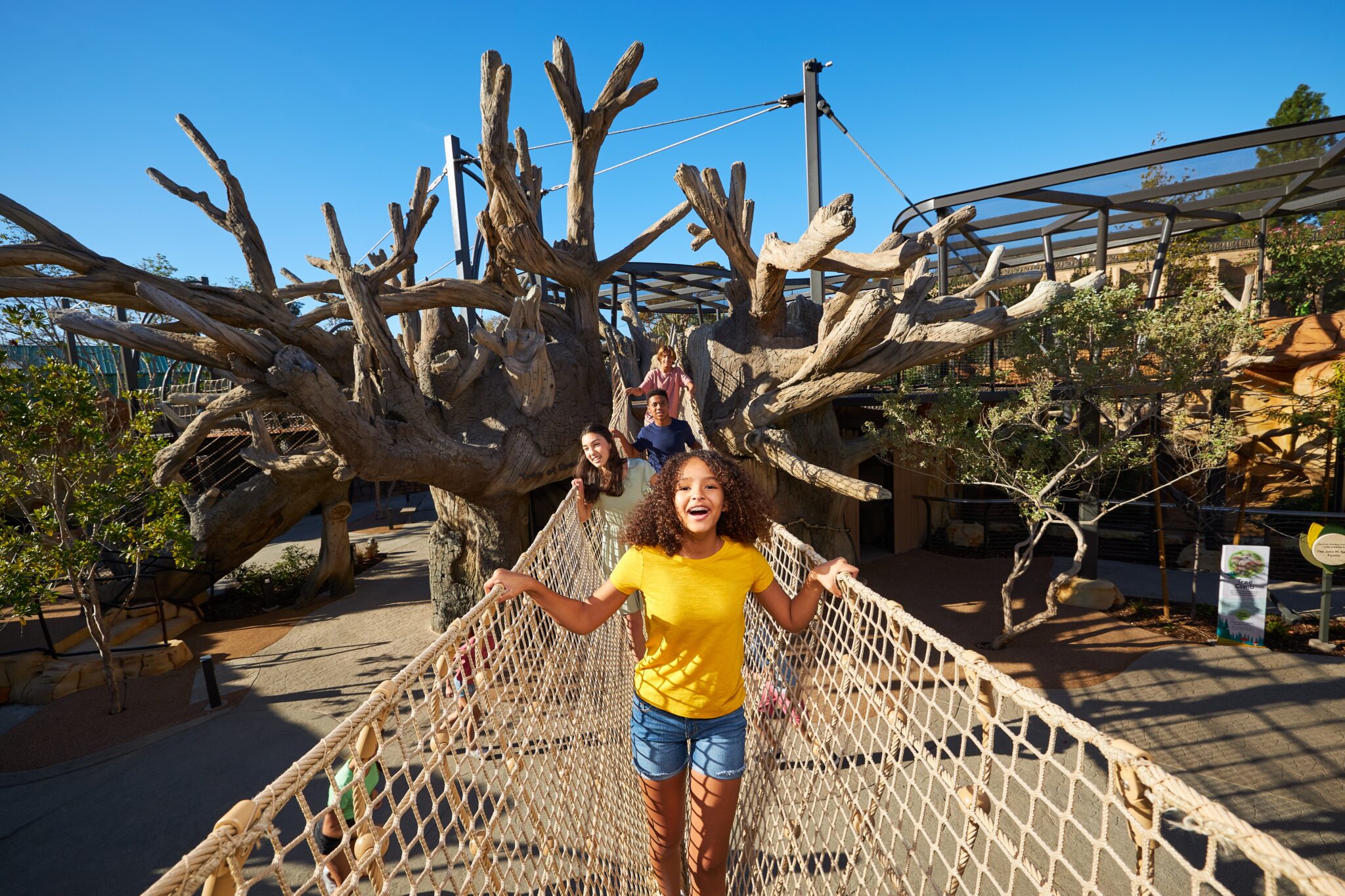New Wildlife Explorers Basecamp is now open at the San Diego Zoo - Attractions Magazine
The Denny Sanford Wildlife Explorers Basecamp – the newest and most-anticipated opening in San Diego Zoo Wildlife Alliance history – is officially open at the San Diego Zoo in Southern California.

At an opening ceremony on March 10, 2022, San Diego Zoo Wildlife Alliance President and CEO Paul A. Baribault, along with team members, kids from across San Diego, and Dr. Seuss' The Lorax (a character known for protecting the environment), welcomed guests into the 3.2-acre state-of-the-art, multi-ecosystem experience on the site of the former Children's Zoo.
Fun San Diego Fact: Dr. Seuss (aka Theodore Geisel) was a longtime San Diego resident. His namesake Geisel Library on the UCSD campus features a life-size bronze statue of the writer and his most famous character – The Cat in the Hat – and every year on his birthday (March 2) the library throws a public birthday party with cake and Seussian musical entertainment.


Also on hand was actress, model, and entrepreneur Brooke Shields, an intern at the San Diego Zoo in May 1983 who returned to celebrate the opening of the new Basecamp.
The San Diego Zoo's largest expansion to date was designed to provide an up-close look at nature and encourage the future caretakers of the planet to appreciate its diverse wildlife.
"Wildlife Explorers Basecamp speaks to the budding conservationist within us all and shows us the marvels of the natural world," Baribault said. "Through these gates, millions of world changers will begin their journey with nature, and demonstrate the power of empathy and compassion as they join us to become allies for wildlife."
Featuring interactive elements like "parallel play" opportunities in a massive treehouse, water play elements, interactive touch screen games, and specialized animation that employs artificial intelligence, dynamic lighting, and whole-room scented environments, Wildlife Explorers Basecamp consists of four zones, featuring wildlife that lives in these ecosystems: Rainforest, Wild Woods, Marsh Meadows, and Desert Dunes.
Wildlife Explorers Basecamp Zones:
The Rainforest – The zone is centered around the 10,000-square-foot McKinney Family Spineless Marvels building, where guests will experience invertebrates, including leafcutter ants, spiders, scorpions, stick insects, and more. The projected migration flyover encounter showcases insects, like migrating monarch butterflies, grasshoppers, and dragonflies in a large meadow scene that curves along the walls into a domed ceiling.

The pollinator experience features giant beeswax-fragrant honeycombs and an observation pane that gives guests the chance to see the workings of a real-life beehive.

The Wild Woods – This area features unusual wildlife species native to Central and South America, like coatis and squirrel monkeys. The Prebys Foundation Discovery Bridge and a 20-foot-tall tree of dreams — a tree house designed as an ancient oak – provide multiple access points and a parallel play experience to the squirrel monkeys that live in the adjacent habitat.

This woodland-themed zone also provides water play opportunities, including a waterfall, a splash pad, unpredictable water jets, and a bluff area with a boulder scramble to encourage exploration.
Marsh Meadows – The pathway through this area was designed to create the sense that guests inhabit the marsh along with frogs, fish, and other wildlife that lives there, including snakes, amphibians, crocodilians, turtles, and lizards (including endangered Fijian iguanas).

The area's central hub – the Art and Danielle Engel-funded Jake's Cool Critters building – is a two-story herpetology and ichthyology structure with more than 7,000 square feet of immersive environments, digital media, learning opportunities, and educational classroom spaces. At the nearby Rady Ambassadors Headquarters, guests can meet a two-toed sloth and a prehensile-tailed porcupine and learn how everyone can help conserve them in their native habitats.
Desert Dunes – The dry desert wash-themed area offers a fun boulder play area with reptile sculptures and petroglyphs among the rocks, while cool caves provide a shady spot to beat the heat, like desert wildlife like the fennec fox, prairie dog, and burrowing owl.

Because the Wildlife Explorers Basecamp is centered around conservation, builders incorporated advanced sustainable materials throughout the area, including a portion of the Spineless Marvels building that was constructed with ethylene tetrafluoroethylene (ETFE) – a fluorine-based corrosion-resistant plastic. In addtion, the Zoo's horticulture team identified more than 100 trees from the previous habitat to preserve and replant within Basecamp.
Wildlife Explorers Basecamp is included with admission to the San Diego Zoo. Click here for more information.
Comments
Post a Comment